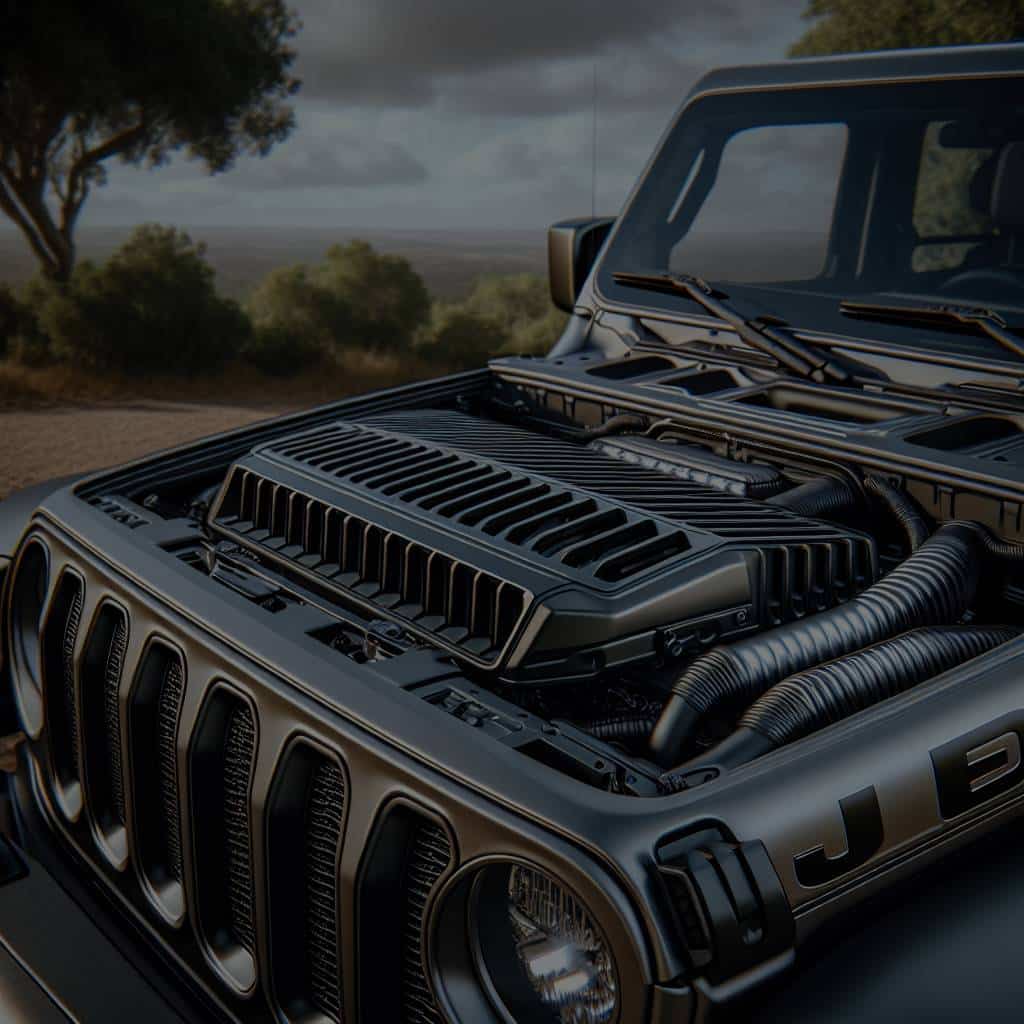Can You Improve Engine Cooling on a Jeep Wrangler with an Aftermarket Hood Vent?

For those of you accustomed to pushing your Jeep Wrangler to the limit, you’ll know that under the hood can get uncomfortably hot. Overheating can lead to a multitude of engine problems, impairing your Jeep’s performance and potentially resulting in costly repairs. An aftermarket hood vent offers a potential solution. Many Jeep enthusiasts swear by them, but can they genuinely improve your engine cooling? Let’s explore in this in-depth article.
The mechanics of Jeep engine cooling
Before delving into whether an aftermarket hood vent can improve engine cooling, let’s establish a baseline understanding of how engine cooling works in your Jeep Wrangler.
Cela peut vous intéresser : How to Reduce the Turning Radius of a Pickup Truck with Steering Modifications?
Your Jeep’s cooling system is complex, involving multiple parts working together. At its core, the radiator and the fan play the most crucial roles. As your engine runs, it generates heat. The radiator, filled with coolant, dissipates this heat, while the fan helps circulate air through the radiator, aiding in the cooling process.
However, in demanding conditions such as off-roading or towing, your engine can produce heat at a rate that outpaces your cooling system’s ability to dissipate it. This is particularly true with older model Jeeps. When the engine temperature rises beyond the safe level, the risk of overheating becomes imminent.
Dans le meme genre : How to Fix Common Electric Window Issues in a BMW 5 Series?
The role of the hood vent
The hood of your Jeep Wrangler is not just a protective shell for your engine. It can also play a significant role in engine cooling, especially when equipped with a vent. A hood vent can enhance air circulation in the engine bay, helping to carry away excess heat and reducing the engine’s overall temp.
Without a hood vent, the hot air generated by the engine can become trapped under the hood, leading to a phenomenon known as ‘heat soak’. This can result in reduced performance and even engine damage if the temperature gets too high. By introducing a hood vent, you are providing an exit point for this hot air, allowing it to escape and be replaced with cooler, ambient air.
The impact of aftermarket hood vents on engine temperature
Many posts on popular Jeep forums cite the positive impact of aftermarket hood vents on engine cooling. These vents come in various designs, from simple louvered panels to more aggressive scoops, all with the aim of improving air circulation.
The consensus on these forums seems to be that aftermarket hood vents can indeed lower engine temperature, particularly when the Jeep is stationary or moving slowly. The improvement is most noticeable in these situations because the standard radiator fan is less effective at slower speeds or when idle.
It’s important to note, however, that the effectiveness of a hood vent will depend on its design and its placement. A poorly designed or improperly installed vent may not provide the desired cooling effect, or could even disrupt the airflow through the radiator, causing more harm than good.
Getting a Quote for an Aftermarket Hood Vent Installation
If you’ve decided that an aftermarket hood vent is worth the investment, your next step will be to get a quote for the installation. This can be done at any good auto repair shop, although you may want to consider a specialist off-road or Jeep-focused garage.
When requesting a quote, be sure to ask about the different hood vent options available. As mentioned earlier, the design and placement of the vent can significantly impact its effectiveness. Make sure to choose a design that complements your Jeep’s aesthetic and provides the best possible cooling benefit.
Before committing to the installation, it’s a good idea to ask for references or reviews from other customers who have had the same work done. This can give you a better idea of the quality of the installation and the potential benefits you can expect.
In conclusion, while an aftermarket hood vent may not be a magic bullet for all your engine cooling challenges, it can certainly help. The key lies in selecting a good design and ensuring it is properly installed. So, don’t let your engine heat up; keep it cool and keep on Jeeping!
Upgrading Your Jeep Wrangler’s Engine Cooling with an Aftermarket Hood Vent
If you’re convinced that an aftermarket hood vent may be the solution to your Jeep’s overheating woes, the next step is to understand how to go about this upgrade. The process involves selecting the right vent, identifying the best placement for it on your hood, and ensuring a proper installation.
A critical factor to consider when selecting a hood vent is the design. Not all hood vents are created equal, and the performance can vary largely depending on the configuration. For example, louvered hood vents tend to be more effective at promoting air flow, while scooped hood vents can direct colder air into the engine compartment. The right choice will depend on your Jeep’s specific needs and your driving conditions.
Placement of the vent is also essential. Ideally, a hood vent should be positioned where it can help pull hot air out of the engine bay while still allowing cold air to be drawn in by the air intake. You may find helpful diagrams in forums or experts’ posts that can guide you on the optimal placement based on your Jeep model.
Finally, the installation should be done correctly to ensure the vent functions as intended. This involves sealing around the vent to prevent moisture intrusion and making sure it is securely attached to the hood. You may wish to leave the installation to a professional, particularly if cutting into the hood is required.
Remember, even the best aftermarket hood vent will not make up for a faulty cooling system. It’s crucial to ensure your radiator, fan, and other components are in good working order before investing in a vent.
Conclusion: Is an Aftermarket Hood Vent Worth It?
In the world of Jeep Wranglers, engine cooling is a topic that has received likes and plenty of discussions in posts. Overheating is a common problem, particularly when pushing these rugged vehicles to their limits. An aftermarket hood vent, often featured in posts of Jeep enthusiasts, has been heralded as a potential solution.
It’s clear from our exploration that a hood vent can indeed aid in reducing engine temperature, especially during stationary or slow-moving conditions. However, it’s not a one-size-fits-all solution. The effectiveness of a hood vent will depend heavily on the design, placement, and proper installation.
In conclusion, if your Jeep Wrangler is struggling with high engine bay temperatures, an aftermarket hood vent could be a worthwhile investment. It might not solve all your cooling problems, but it can certainly help keep your engine cooler and perform better. As with any modification, it’s critical to do your homework and make a well-informed decision.
With proper selection, placement, and installation, you’ll be well on your way to improving your Jeep’s engine cooling. So, don’t let the heat slow you down. Keep your engine cool, hit those trails, and continue to enjoy the thrill of Jeeping!
